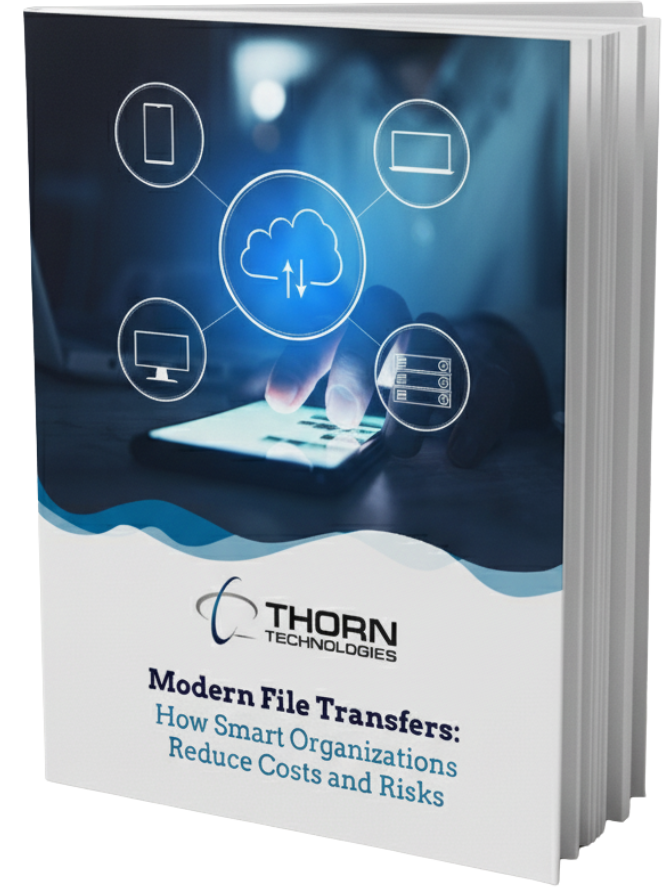When evaluating SFTP solutions for your cloud infrastructure, AWS Transfer Family might seem the obvious choice. After all, it’s built right into AWS, fully managed, and promises to eliminate the hassle of provisioning and maintaining your servers. But before you commit, you need to understand some critical limitations and hidden costs. Let’s dive into that and get into AWS Transfer Family vs SFTP Gateway, which could be a much better option for you.
The Password Authentication Problem
Here’s where things get complicated with the AWS Transfer Family: the web interface only supports key-based authentication; there is no password authentication through the UI.
This might sound like a minor technical detail, but it creates real-world problems. SFTP typically involves file transfers with external partners, vendors, or clients. Even organizations with strict key-based authentication policies usually have that one exception—a partner needing password authentication.
Since AWS Transfer Family’s built-in interface doesn’t support passwords, you must abandon the web UI entirely. Instead, you must implement password authentication through a custom Lambda function that stores credentials in AWS Secrets Manager. What should be a basic SFTP feature now requires custom development work.
Beyond Basic Authentication: The Management Challenge
Password authentication is just the tip of the iceberg. What happens when you need to configure more complex requirements like:
- User permissions and folder access controls
- File sharing between different users
- Mapping specific users to designated S3 locations
- Custom key exchange algorithms
- IP whitelisting for security compliance
AWS Transfer Family’s SaaS approach makes these configurations difficult or impossible to implement. You lose the flexibility to customize key exchange algorithms, set your own server host keys, or easily manage IP whitelisting—features many organizations consider essential for security compliance.
The Total Cost Reality Check
AWS Transfer Family’s pricing structure contains several cost components that might not be obvious upfront:
Always-On Endpoint Costs: You’ll pay $0.30 per hour for each SFTP endpoint, and you cannot pause this without deleting the endpoint entirely. That’s over $200 per month per endpoint, whether you’re actively using it or not.
Data Transfer Surprises: While AWS typically offers free data ingress, Transfer Family splits the cost at $0.04 per GB for both ingress and egress. Since SFTP workloads are primarily uploads, you’ll pay for data ingress that would generally be free—a significant cost if you’re handling terabytes of data.
Secrets Manager Overhead: Each SFTP user requiring password authentication needs their own secret in AWS Secrets Manager, which costs $0.40 monthly. With hundreds or thousands of users, these costs add up quickly.
The Engineering Tax: The most significant hidden cost is the lack of a comprehensive web admin portal. Every feature you’d expect in a typical SFTP management interface requires custom implementation using Lambda functions and other AWS services. The engineering time to build, maintain, and operate these custom solutions—plus the ongoing overhead of involving engineers for simple tasks like password resets—can dramatically increase your total cost of ownership.
A Different Approach: Purpose-Built SFTP Management
SFTP Gateway takes a different approach to address organizations’ real-world needs in managing SFTP environments across multiple cloud platforms.
Complete Authentication Support: Password and key-based authentication work seamlessly through the web interface—no custom Lambda functions are required.
Comprehensive Web Admin Portal: Non-technical staff can manage users, configure permissions, set up folder sharing, and handle routine administrative tasks without involving engineering teams.
Baseline Security Features:
- Customize key exchange algorithms to meet security requirements
- Implement IP whitelisting with EC2 Security Group rules
- SFTP audit logging for compliance
- Support for multiple SSH keys per user for key rotation
Advanced Features Built-In:
- Map users to S3 buckets with flexible permissions
- Cross-cloud support for S3, Azure Blob Storage, and Google Cloud Storage
- Backup and recovery capabilities
- Apply per-user IP whitelisting for additional network controls
- Import and export server host keys as needed
The Bottom Line on AWS Transfer Family vs SFTP Gateway
While AWS Transfer Family might appear to be the natural choice for AWS-native organizations, its limitations can create significant operational overhead and hidden costs. The lack of password authentication support through the web interface, limited customization options, and always-on pricing can make it an expensive and inflexible solution.
For organizations that need a full-featured SFTP solution with comprehensive management capabilities, purpose-built solutions like SFTP Gateway often provide better value through reduced engineering overhead, built-in administrative features, and more predictable costs.
Before making your decision, consider not just the obvious technical requirements, but also the operational complexity and total cost of ownership over time. Sometimes the “native” solution isn’t necessarily the most cost-effective choice for your use case.
For more on this, check out our YouTube video, “SFTP Gateway vs. AWS Transfer – Thorn Technologies Office Hours, Episode 003.” And then, give SFTP Gateway a spin with a 30-day free trial on the AWS Marketplace. For pricing details on the Standard, Professional, or Enterprise version, check out the SFTP Gateway pricing grid.


